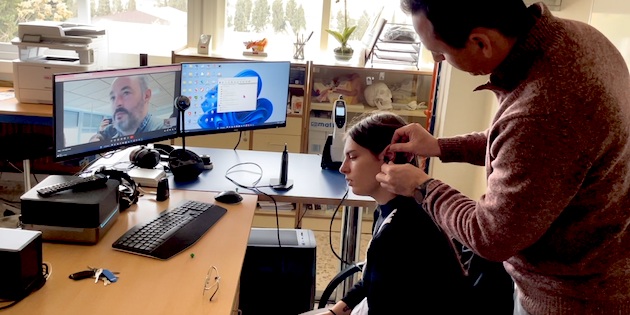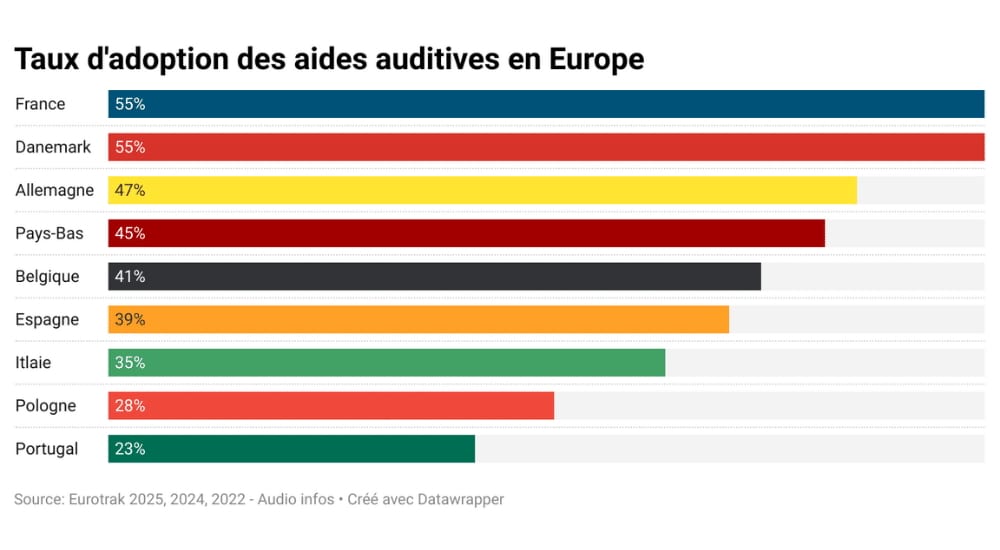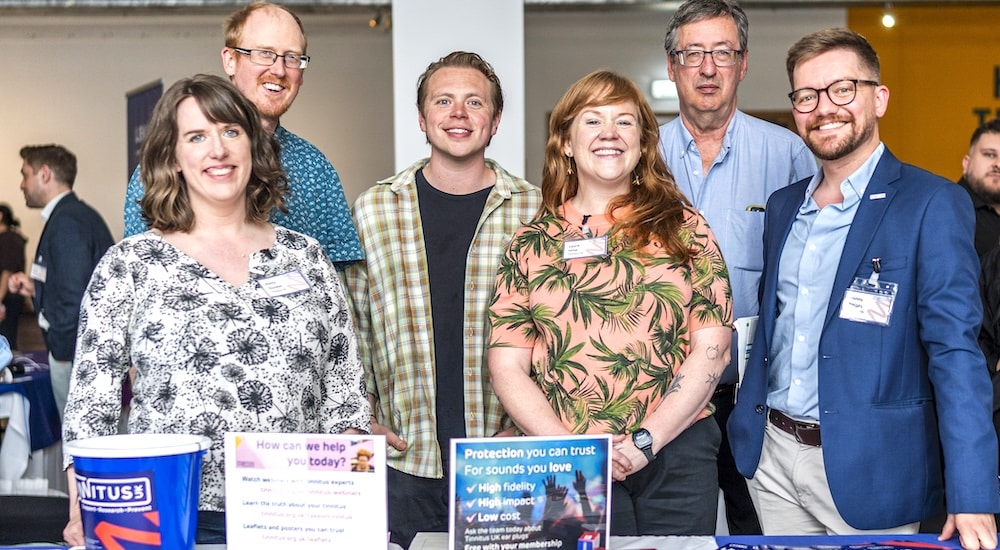A REMOTE POSSIBILITY......for audiological services? Reflections on a study of teleaudiology.
A study by the Spanish Ministry of Education and Vocational Training has informed a comprehensive analysis of telematic possibilities in hearing care, one that takes in angles from social productivity, education, and the environment. Read a first-hand account by the authors of this analysis on the study's methodology and actions employed, as well as the all-important conclusions it delivered.

Creation of a teleaudiology system was an innovation and research study carried out in two Spanish state education centres, co-ordinated by Luis Miguel Piqueras and Alberto Reyes, and with guiding input from Alejandro Coscollano and his team (Diatec), its purpose being to research the alternatives and required equipment among different ways to provide audiological services remotely.
Background and studies
Professionals worldwide have made multiple investigative approaches to the field of teleaudiology, as the following examples illustrate:
- Since 2005, two formats have been found acceptable for the provision of such services from one location to another (Krumm et al., 2005):
- Synchronous (in real time): allows professionals to interact with patients or other health professionals using audio and/or video in real time or, also, through remote control of applications on a computer and its peripherals;
- Asynchronous (record and send): uses the capture of audio signals, video clips, still images or any other data so it can later be transmitted/received.
- Researchers employed synchronous protocols to administer a variety of common hearing tests to subjects including pure tone audiometry, speech audiometry, otoacoustic emissions, and brainstem evoked potentials.(Givensy Elangovan, 2003; Krumm, 2007).
- Synchronous technology has been used to program cochlear implants (Ramos et al, 2008), programme and verify the operation of hearing aids (Ferrari and Bernardez-Braga, 2009, Wesendahl, 2003), and to provide neural feedback/telemetry evaluation (Shapiro, Huang, Shaw, Roland, and Lalwani, 2008).
- East Carolina University, driven by the needs of an isolated rural population, has developed an online hearing evaluation that accesses an internet protocol network through an audiometer (Givens et al., 2003). Studies using this system have shown identical results between the standard audiometry system and the internet-based system (Givens y Elangovan, 2003).
- At the University of Utah, neonatal hearing screening is carried out through remote telematic control. This technology involves the use of otoacoustic emissions and brainstem potentials (ABR). Early results from this project suggest the services using this technology are efficacious (Krumm, Ribera and Schmiedge, in various media).
- Additionally, email communication of cognitive behavioral therapy has been used for tinnitus treatment (Kaldo-Sandström et al, 2004) and to assess new hearing aid users (Laplante-Lévesque et al, 2006).
- For example, concordance was found between results obtained using standard and remote procedures for pure tone audiometry (Givens and Elangovan, 2003), for the Hearing in Noise Test (HINT) in speech perception (Ribera, 2005) and for auditory brainstem responses (Towers et al., 2005). In the area of cochlear implants, Zumpano and his team (2008) carried out a pilot study in order to verify the resources and parameters necessary to make remote calibration of multichannel CI systems viable.
The calibration sessions were carried out between the Audiological Research Centre (USP–Bauru) and a service located 920 kilometers away, where a professional with no experience in this area was present. The procedures were carried out through the WebEx Support Center.
These results indicated that telepractice is an effective, viable, and innovative method of monitoring implanted subjects in Brazil. Even so, more research is still necessary to enable use on a national scale.
The project’s objectives
Although remote services – through “clouds” or applications, used in prosthetic adaptation today by the different hearing aid manufacturers – have experienced a notable boom since the pandemic, the objective of this project was to investigate how many of them could be viable at distance, and what equipment would be needed. All of this involved the objective of using generic methods not linked to a service provided by a manufacturer, and that may be used for any type of hearing aid and audiological test required.
The ultimate goal is to continue advancing in Art. 4 of “General competence of the prosthetic audiologist”, according to the Spanish government bulletin (BOE) of January 5, 2023, wherein it states: “The general responsibility of this heading consists in selecting and adapting hearing prostheses, carrying out audiological evaluation, monitoring the user and maintaining prostheses, both on site and in remote assistance, electronically, as well as determining acoustic protection measures based on the evaluation of sound levels.”
Methodology employed
To carry out the different tests, computers used software for creating encrypted networks, USB redirection, remote desktop tools, all with platforms such as Teamviewer, Google Meet, Microsoft Teams, Skype, etc. Different audiological equipment was also tested, such as Affinity Compact analyzers, MedRX ARC, Affinity 2.0, Titan impedance meter, Eclipse OAS, Viot Videotoscope and Noahlink Wireless programming interfaces, all of them linked to the performance of audiological tests and programming of hearing aids.
Synchronous methodologies were used (simultaneously) during the performance of the different tests, for communication with the patient and for the audiological service to be performed, thus being able to divide the services into telediagnosis, telemonitoring-communication, teleadaptation, telecounselling, and telerehabilitation.
To do this, in a first phase different tests were carried out between both educational centres, establishing work protocols based on the service and technical possibility required, with a view to subsequently using the most satisfactory ones externally.
Advantages and challenges
Teleaudiology offers several advantages for both patients and professionals. On the one hand, patients can receive personalised, fast, and comfortable care from withing their own environment, allowing access to these services to people who live in isolated geographical areas or who have difficulties in opting for audiology services, and with the consequent saving of travel time and costs.
On the other hand, professionals can optimise their time and resources, expand geographic coverage, and improve the quality of their services.
But at the same time, technologies for the development of remote techniques are varied, and it is necessary to have extensive knowledge and varied skills with the different tools, hardware, electromedical material, software, networks, etc.
What actions were carried out?
Given the novel nature of what was investigated, multiple tests have been carried out with equipment and systems, analysing the pros and cons of each of them. As an example of what has been tested, the following can be highlighted:
- Performing videotoscopies and tympanometric tests.
One example: the patient and the audiological equipment were located in Granada and the hearing care technician who managed, performed, and interpreted the test, was located in Albacete (345Km apart). In this way, the role played by the Granada staff is that of assistant, while it is the technician who indicates, performs and interprets the test, as the hearing aid audiologist located in Albacete. For proper implementation, synchronous communication tools are used, in this case, Google Meet.
- Performing remote audiometry techniques.
In the first and second phases, remote audiometry processes were generalised in different hearing centres in the provinces of Albacete and Granada, between educational centres, and internally, within centres themselves.
- Remote programming and electroacoustic checking of hearing aids.
On this occasion, programming and electroacoustic checks were carried out on hearing aids located in both educational centres, and in such a way that the students from Granada programmed and checked hearing aids located at the Al-Basit centre. The students from Albacete did the same with hearing aids located at the CPIFP in Granada.
- Programming and verification of hearing aids using REM measurements.
REM programming and measurements were carried out between different centres, within same centres, and with associated hearing centres to carry out the work centre training module. In all cases, the equipment was being managed from one of the centres, but with the patient and assistant located remotely.
- Rehabilitation.
Video calls were used to carry out verbal therapies, and remote acuphenometry and tinnitus rehabilitation were performed.
- Other processes in remote audiology:
– OAS remotely from a hearing centre to a professional training centre in Granada. Remote OAS testing was carried out to see if neonatal hearing screening tests were reliable at a distance.
– Manufacturing processes.
Earmould and hearing aid manufacturing processes were carried out with 3D software to see what processes can be carried out remotely (scanning, design and printing) and analyse which parts of each process can be carried out remotely.
– Education and teaching processes.
The students of the I.E.S. Albasit and C.P.I.F.P Aynadamar (Spain) are training in different types of telematic practices, for example:
– Remote Desktop. Remote desktop activities were carried out so that students could practise from the centre and from home:
– Earmould design.
– Audiometry techniques.
– Voice analysis and sonometry techniques.
– Programming and verification of hearing aids.
– Redirection of hardware.
– Audiometry techniques between training centres.
– Programming hearing aids remotely between training centres.
– Access to remote materials not available in centres.
Variables taken into account:
- Technical means.
– Necessary materials and equipment.
– Multiplatform applications.
– Remote communication and handling tools.
– Skills, knowledege, and abilities of audiologists, auxiliaries, and patients.
- Treatment
– How to carry out services.
– Situations and acoustic conditions.
– Saving of time and money.
– Ecology.
– Increasing the geographic area of patients.
– Attending remote areas and those with few health resources.
- Ethical and legal questions
– In what situations is teleaudiology ethical?
- Security in networks and databases
– Encryption of networks, VPN, etc.
– Patient databases on the audiologist’s or the patient’s PC
© Al-Basit / Aynadamar Airway liminal tone audiometry testing in a remote centre.
Conclusions
Multiple variables were tested and considered, and a greater or lesser number of difficulties were found relevant to each alternative. In conclusion, however, the final answer is that teleaudiology is a viable and reliable alternative to facilitate access to hearing health services for people who need them. However, drawbacks and challenges were also evident, such as a lack of legal and ethical regulation, the need to guarantee the security and confidentiality of data, the quality and reliability of connections, devices, and training, and also capacity building, both of professionals, as well as patients.
And at an educational level, the implementation of teleaudiology opens a new window of training possibilities, opening up new pedagogical strategies to prosthetic audiology studies through the use of innovative methodologies.
Source: Audio Infos Spain issue 174 July-August 2023





